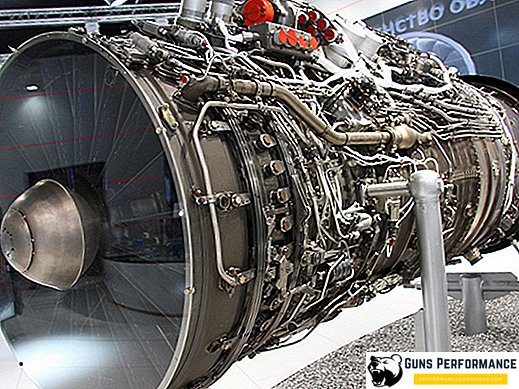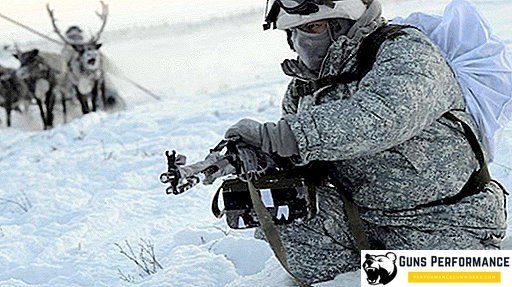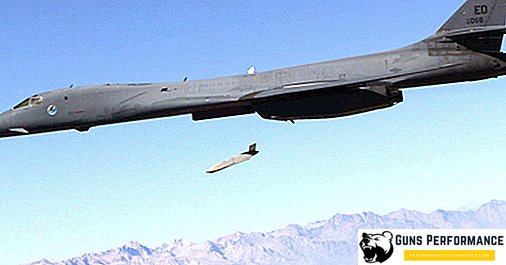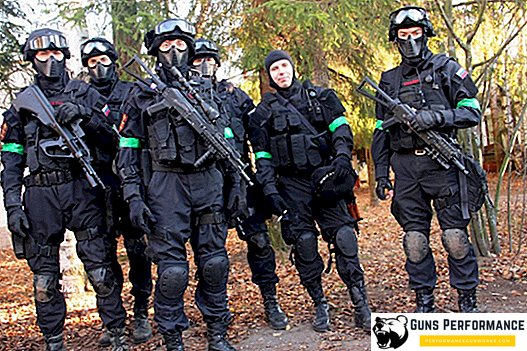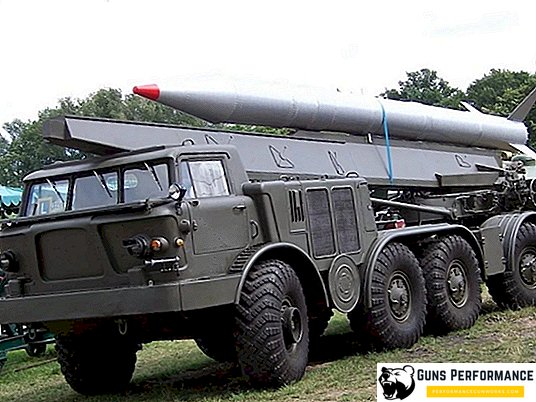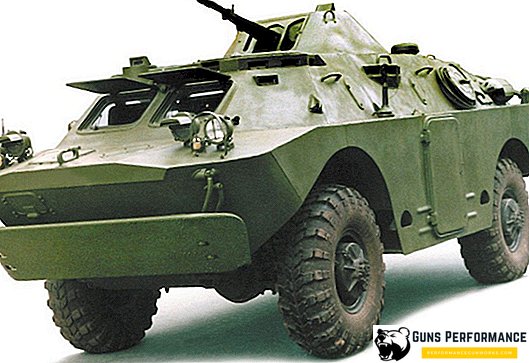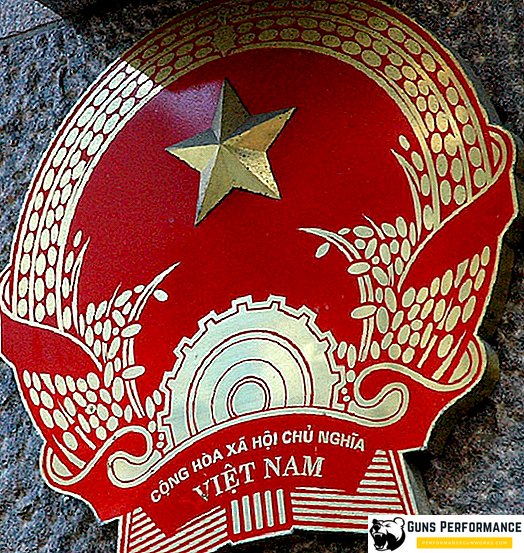“The warships, bristling with anti-aircraft guns and machine guns, are firing intensively at the attacking aircraft. The spewing flame“ erlikon ”, standing next to the bridge, crashing its shots completely overwhelms the teams. another pair of turns struck at the wrecked plane, finally completing it. Alternating with each other, the anti-aircraft guns of the ships continued to conduct intense fire for another 10 minutes, after which one or the other guns Kahlo. Trunks of anti-aircraft guns of the destroyer head protection order blackened and continued to smoke. The sky above the marching warrant finally cleared of enemy aircraft. "

This is how the German Luftwaffe’s attack on the allied convoy was described in Valentin Pikul's landmark novel Requiem Caravan PQ-17. In one short paragraph, the enormous role that brilliantly played in the defense of the naval caravans in the North of the 20-mm Erlikon cannon is described. No wonder the name of this gun has become a household name and is firmly included in the dictionary of military terms, associating with the most massive and effective air defense tool.
The gun fought on different front lines, and all the belligerents gratefully spoke of this representative of the rapid-fire small artillery. The share of anti-aircraft guns of this modification accounted for the most downed aircraft. The gun, which appeared in the mid-20s of the 20th century, became truly legendary. And today, guns with a well-known logo continue to be in service with a number of countries.
The birth of the gun Oerlikon
In spite of the fact that the “airlikon” is considered to be a Swiss invention, these weapons were produced in many countries and in each case the name was interpreted in its own way. For the first time an automatic gun with a caliber of 20 mm was released in 1927. The birthplace of the invention was the production workshops of the Swiss concern Oerlikon, where the design development of the Semag company was successfully implemented.

The Swiss designers did not reinvent the wheel and relied on the ready-made industrial model of the German 20 mm gun designer Reinhold Becker. In the years of the First World War, this talented German managed to create an effective rapid-fire cannon. The gun had excellent fire and operational capabilities, but the end of hostilities put an end to successful development. In defeated Germany, Becker could not implement his idea further, since all anti-aircraft artillery fell under the strict restrictions of the Versailles Treaty. The only place where you could continue to work in the field of weapons development for many German designers was neutral Switzerland.
The company Semag (Seebach Maschinenbau Aktien Gesellschaft), which officially produces cars, has become a production site for the German. Financing of the development was carried out formally through the artillery department of the Raynhvera.

After the financial crisis broke out in Germany, Becker sold his patent to the Swiss, who rushed to implement the project and issued the first few samples. The new weapon was capable of firing powerful 20x100 mm cartridges with a rate of fire of 350 rounds per minute. After successful trials, Semag planned to launch a cannon into mass production, but the financial crisis led to the bankruptcy of the company. Subsequently, the Swiss company Oerlikon intervened in the fate of the rapid-fire cannon, which gave not only the name of a new weapon, but also a start in life.
During the global economic crisis, the Swiss concern, engaged in the production of diesel locomotives, automobiles and machine-tool equipment, not only retained its economic position, but also strengthened its financial position. In the mid-20s, the parent company opened a branch, which was supposed to be engaged in precise metalworking and weapon production.
Using the achievements of their predecessors, the designers of the Oerlikon company managed to create two modifications of the instrument by 1925, but the subsequent development was delayed for two whole years. Only in 1927, the final presentation of ready-made rapid-fire guns took place. Work on the new instrument were conducted in three modifications at once. The gun, created by the German Becker, was named Oerlikon F, the development of the company Semag received the Oerlikon L index, and the owners of the concern named their own invention Oerlikon S.

All three modifications had a similar construction of the automation mechanism; the products were based on the same principle of operation. The fixed gun barrel had a heavy shutter that was moving freely. Ammunition was in the store. The length of the barrel, respectively, the power and rate of fire of the gun in all three versions were identical.
The latest version of the gun "Oerlikon" 1S was intended for installation on a car platform as an anti-aircraft gun and anti-tank weapons, the type of gun Linder. The only drawback of the gun was the small capacity of the store. Ammunition ammunition is only 15 rounds, which was extremely small for this type of guns. However, despite significant shortcomings in the amount of ammunition, the Swiss hurried to put their offspring for sale.

Transition from childhood diseases to the period of maturation of Erlikon
Almost all modifications of guns, which were produced directly in Switzerland, were made at the factories of France, the USA, Germany and Japan, contained the same scheme. The design of the gun, developed by German Becker, was quite simple and was surprisingly efficient. The fixed barrel and the chamber were one. The device had a massive movable shutter sliding in a horizontal plane. Getting into the extremely rear position the shutter was held by two pins - the sear. The reverse movement of the shutter provided the force of the spring mounted directly on the barrel.
During the shot, powder gases through the bottom of the sleeve acted on the bolt, taking it to the rear position. Excessive energy was extinguished by the spring, which acts as a buffer.
Oerlikon had a device that was practically insensitive to pollution. The gun was impossible to disable. Even intense long shooting did not cause a delay. A broken barrel could be easily replaced in the field. Shells were fed from the store, the capacity of which is constantly increasing. The store could be installed from either side, both on the right and on the left.

Since 1935, the Swiss have launched the most successful model in three different versions - the guns with the index FFF, FFL and FFS. New samples had a lower mass and higher rate of fire. Significantly increased the speed of the projectile. All three versions were equipped with stores of increased capacity, which now could hold 45, 60 and even 100 cartridges.
It should be noted that the modification of the aircraft gun did not go into a large series. Since 1939, the company has turned off all subsequent developments in this direction. The main focus was the improvement of the anti-aircraft guns and the organization of mass mass production.
Combat use of Erlikon
The gun, due to its simplicity in operation and large fire capabilities, is becoming popular in the fleet. Cannon "erlikon" equipped warships of the British and American fleets. Due to the insignificant weight of the installation and small dimensions, the machines were mounted on any free space available on the ship. The guns were produced with a single barrel or double-barreled version. On the largest ships of the Second World War, on British and American battleships, the number of guns of this type sometimes reached hundreds. Their main task is the last line of air defense.
After the long-range anti-aircraft artillery could not reach the attacking aircraft, erlikons came into play, which could create a non-penetrating air defense umbrella during the first 2-3 minutes. Together with other military supplies to the USSR were also supplied the airliners. During the war years, up to 2 thousand guns were received for the needs of the Soviet fleet.

The gun was produced in France and Japan. However, the most common was the American version of the anti-aircraft gun. The Oerlikon successfully passed through the entire war, becoming the most massive means of short-range air defense. However, the caliber of 20 mm did not become the limit of design thought. Already in the post-war years there appeared modifications of the 25-mm Oerlikon KBA cannons and 35-mm anti-aircraft guns of the KDB type, which became the main means of naval air defense at a certain stage.



